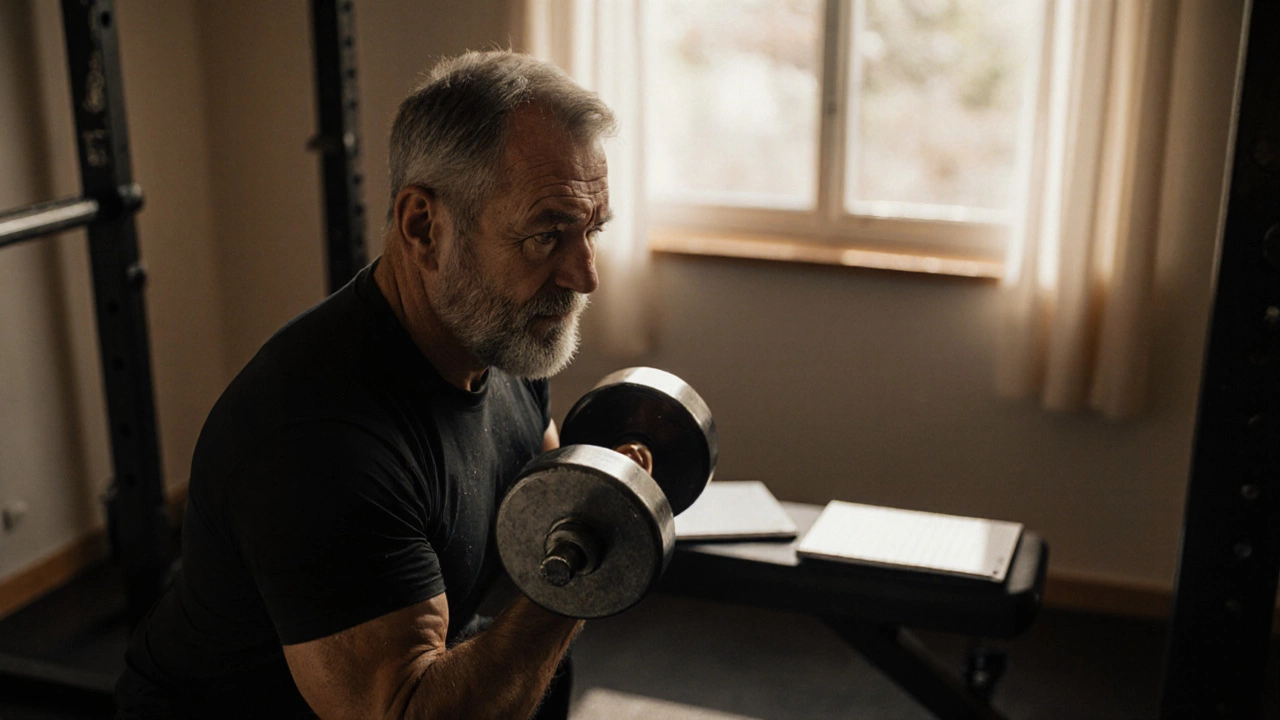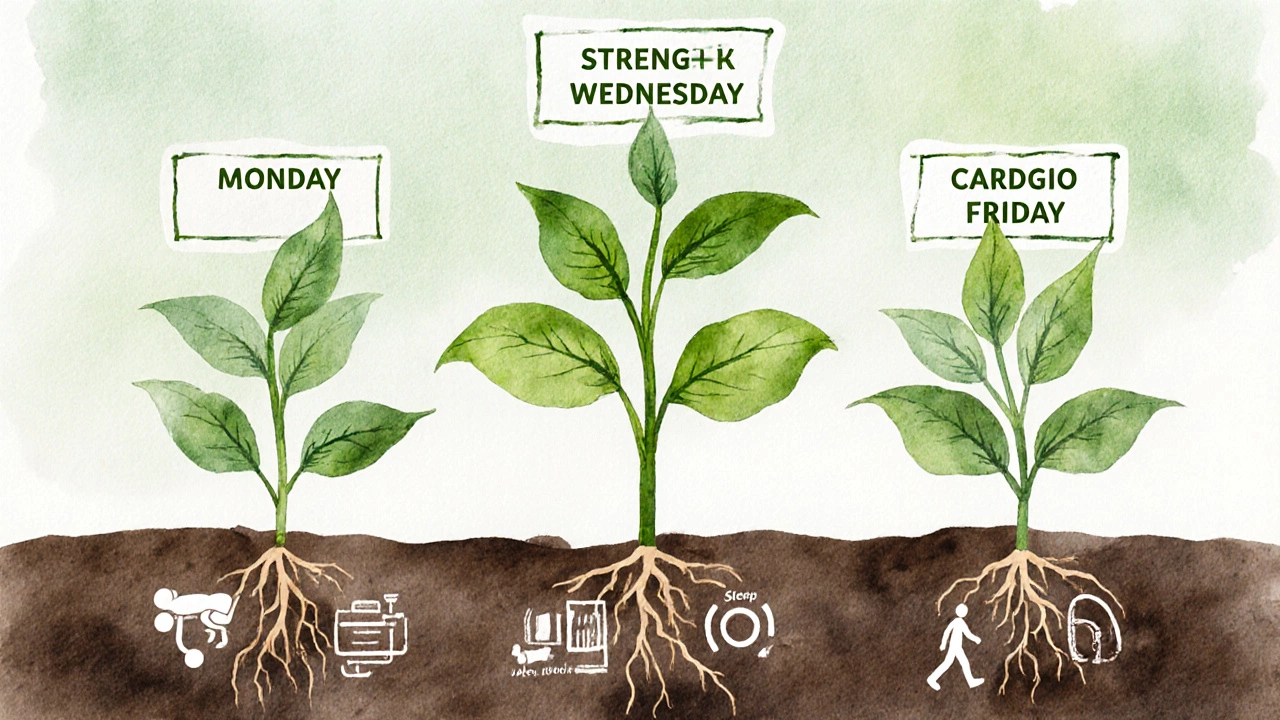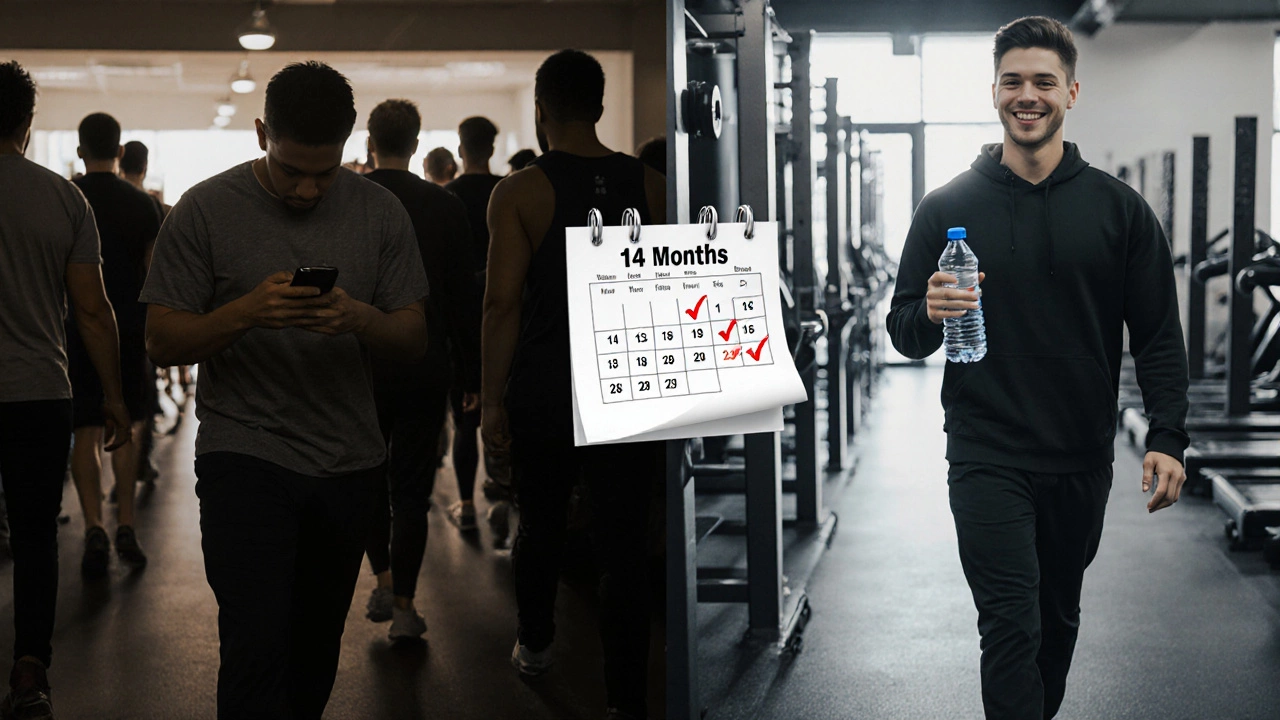
Gym Workouts November 3, 2025
Is working out 3x a week enough for real results?
Workout Frequency Calculator
How Your 3x Weekly Routine Matches Your Goals
This tool helps you determine if three well-structured workouts per week can achieve your fitness goals based on your specific circumstances. The article explains that quality and consistency matter more than frequency.
Your Result
Your 3x weekly routine is suitable for your goals with your current schedule and recovery.
How many times do you really need to hit the gym to see changes? You scroll through Instagram and see people lifting heavy, shredded, and posting their six-pack selfies every day. Then you look at your own schedule-work, family, maybe a second job-and wonder: is working out 3x a week enough? The answer isn’t yes or no. It’s more like, it depends-on what you’re trying to achieve, how you structure those sessions, and what you do outside the gym.
What 3x a week actually looks like in real life
Most people who say they work out three times a week mean Monday, Wednesday, Friday. That’s fine. But here’s the catch: if those three days are just 30 minutes of random machine-hopping with no plan, you’re not building anything. You’re just burning calories while watching the clock.
Real progress comes from consistency, not frequency. A 2023 study from the Journal of Strength and Conditioning Research tracked 120 adults over six months. Those who trained three times a week with structured strength programs gained just as much muscle as those who trained five times-as long as the volume and intensity were matched. That’s the key. Three sessions aren’t magic. Three well-designed sessions are.
Think of it like watering a plant. Watering it every day with a teaspoon won’t help. Watering it three times a week with a full jug? That’s how you grow.
What you can realistically build in three sessions
If your goal is to get stronger, lose fat, or just feel better in your skin, three days a week gives you plenty of room to make progress. Here’s what’s possible:
- Strength gains: You can increase your squat, bench, and deadlift by 10-20% in 8-12 weeks with a solid full-body routine three times a week.
- Fat loss: Combine those workouts with decent nutrition, and you’ll lose body fat at the same rate as someone working out five days a week-because calorie balance matters more than workout count.
- Endurance: If you add one cardio session (like brisk walking, cycling, or rowing) on a non-lifting day, your heart and lungs improve noticeably.
- Mental health: Regular movement reduces stress, improves sleep, and lifts mood. Three days is enough to trigger those benefits.
People who train three times a week and stick with it for a year often look better and feel stronger than those who start strong every Monday but burn out by March.
The hidden problem: recovery and consistency
Here’s why most people fail at working out five or six days a week: they don’t recover. They’re sore, tired, and mentally drained. So they skip a day, then another, then the whole month slips away.
Three days a week gives you breathing room. You can sleep well. Eat properly. Handle stress. Show up on your scheduled days without feeling like you’re dragging yourself to the gym.
One client I worked with in Bristol-Sarah, 42, mom of two-tried six days a week for six months. She lost motivation, gained weight from stress-eating, and quit. Then she switched to three days: Tuesday, Thursday, Saturday. She started with bodyweight circuits, added dumbbells after two weeks, and now lifts heavier than she ever did before. She hasn’t missed a session in 14 months.
Consistency beats intensity every time. Three days a week, done right, is more sustainable than five days done half-heartedly.

What your three days should include
Not all workouts are created equal. Three random sessions won’t cut it. You need structure. Here’s a simple, proven template:
- Day 1: Full-body strength-Squats, push-ups or bench press, rows, overhead press, planks. 4 sets of 8-12 reps per exercise.
- Day 2: Cardio + core-20-30 minutes of steady-state cardio (brisk walk, bike, elliptical) + 10 minutes of core work (dead bugs, bird-dogs, hanging leg raises).
- Day 3: Full-body strength (different movement pattern)-Deadlifts, pull-ups or lat pulldowns, lunges, dumbbell chest press, Russian twists. Same rep range.
You don’t need fancy machines. A pair of dumbbells, a bench, and a pull-up bar are enough. If you’re in a gym, use barbells. If you’re at home, use resistance bands or bodyweight variations.
Progressive overload is the secret. Every week, try to do one more rep, or add 2.5 lbs, or hold a plank for 5 seconds longer. That’s how you get stronger without needing to train every day.
What you can’t expect from three workouts
Let’s be honest. Three days a week won’t turn you into a bodybuilder. It won’t get you ready for a powerlifting meet in three months. It won’t melt 20 pounds of fat if you’re eating junk food.
If your goal is extreme muscle mass, competitive fitness, or elite athletic performance, you’ll need more volume, more recovery time, and probably a coach. But if you want to feel stronger, look better, sleep better, and have more energy? Three days is more than enough.
And here’s the truth most trainers won’t tell you: you don’t need to be perfect. Miss a workout? No big deal. Just get back on track next time. Three days a week is forgiving. It’s designed for real life.
What to do on your off days
Rest doesn’t mean lying on the couch scrolling TikTok. Movement on off days helps recovery, improves circulation, and keeps you moving.
Try these on your non-lifting days:
- Walk 8,000-10,000 steps
- Stretch for 10 minutes (focus on hips, shoulders, and spine)
- Do yoga or mobility drills
- Play with your kids, garden, or take the dog for a longer walk
These aren’t “extra workouts.” They’re recovery tools. They help you feel better on your lifting days.

Real results: what people actually see
People who stick with three days a week for six months typically report:
- More energy during the day
- Better sleep quality
- Clothes fit better
- Less lower back pain
- Improved mood and confidence
One man in his 50s from Clifton, Bristol, started three days a week after a mild heart scare. He lost 18 pounds, lowered his blood pressure, and stopped taking one medication. He didn’t change his diet much-just started moving consistently.
That’s the power of three.
When three times isn’t enough
There are times when you need more:
- You’re training for a marathon or triathlon
- You’re recovering from injury and need more mobility work
- You’re an athlete competing at a high level
- You’ve plateaued for 6+ months on your current routine
In those cases, you might need to add a fourth day-or shift your focus. But for 90% of people? Three is plenty.
Final thought: It’s not about how often. It’s about how well.
Working out three times a week isn’t a compromise. It’s a smart strategy. You’re not trying to be the guy who lifts every day. You’re trying to be the guy who still lifts five years from now.
That’s the real win.




